

This is the final post in a series on how to teach different phonics skills. In this post, I explain how to teach multisyllabic words. I answer the question “What are the 6 syllable types?” and explain how they help students read multisyllabic words. I share a FREE syllable types resource and finally, leave you with a FREE Multisyllabic Word list to support the phonics instruction in your classroom.
As teachers, one of the most important jobs we have is to teach children how to read. The Science of Reading has demonstrated that to do so successfully, we must provide our students with explicit and systematic phonics instruction. To support your phonics instruction, I created a series of blog posts that explain how to teach different phonics skills. In earlier posts, you’ll find information on how to teach cvc words, teach blends and digraphs, long vowels, and diphthongs.
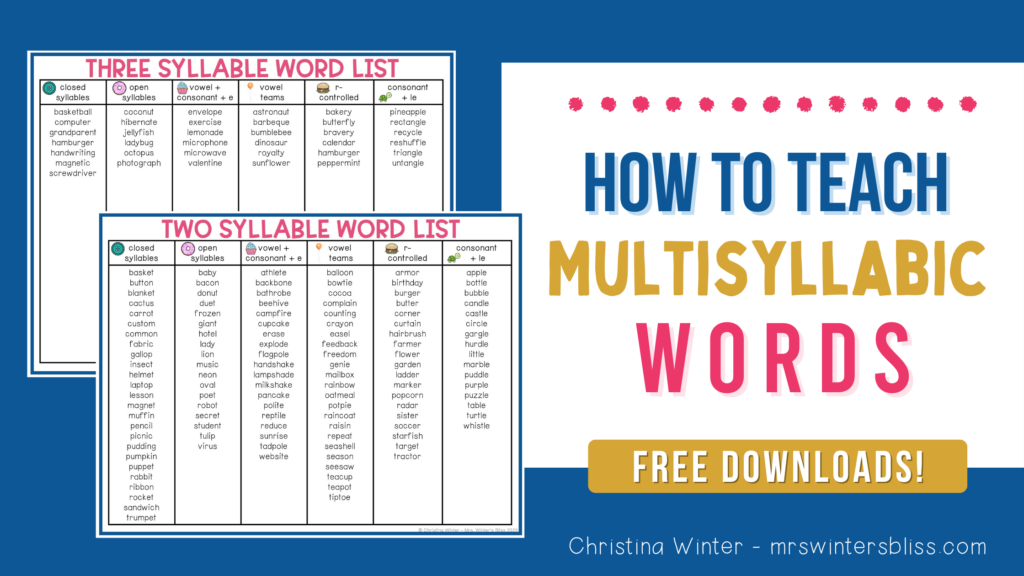
Today I wrap up the blog series with information on how to teach students to read and write multisyllabic words. I share information on the 6 syllable types, resources to help you teach the syllable types, and leave you with a multisyllabic word list.
What is a Multisyllabic Word?
A syllable is a word, or a part of a word, with one vowel sound. You count syllables by listening to how many vowel sounds you hear in a single word.
Single-syllable words, like she and fine, each have one vowel sound. Multisyllabic words have one vowel sound for each syllable. For example, de-fine, pro-gram, chil-dren. According to the National Reading Panel, approximately two-thirds of the words in printed text are made up of multiple syllables. Multisyllabic decoding is a term used to describe the ability of students to read and spell multisyllabic words.
How to Teach Multisyllabic Words
One of the best ways to help students learn to read multisyllabic words is to teach them the 6 different syllable types.
When a student is trying to read a word, they need a clear strategy to figure out what sound the vowel in the word is making. When they know the sound the vowel makes, they can then correctly blend the sounds in the word, decode it, and pronounce it correctly. Teaching the 6 different syllable types is a systematic way of helping them do all of this!
Teaching students the syllable types helps them understand how to break longer words into manageable parts. It allows them to read longer words more accurately and fluently, builds their confidence as readers, and gives them a strategy for attacking these longer, more challenging words!
What are the 6 Syllable Types?
1. Closed: These syllables end in a consonant and the vowel is usually short. This is the most common type of syllable we see in English. Ex: rab–bit
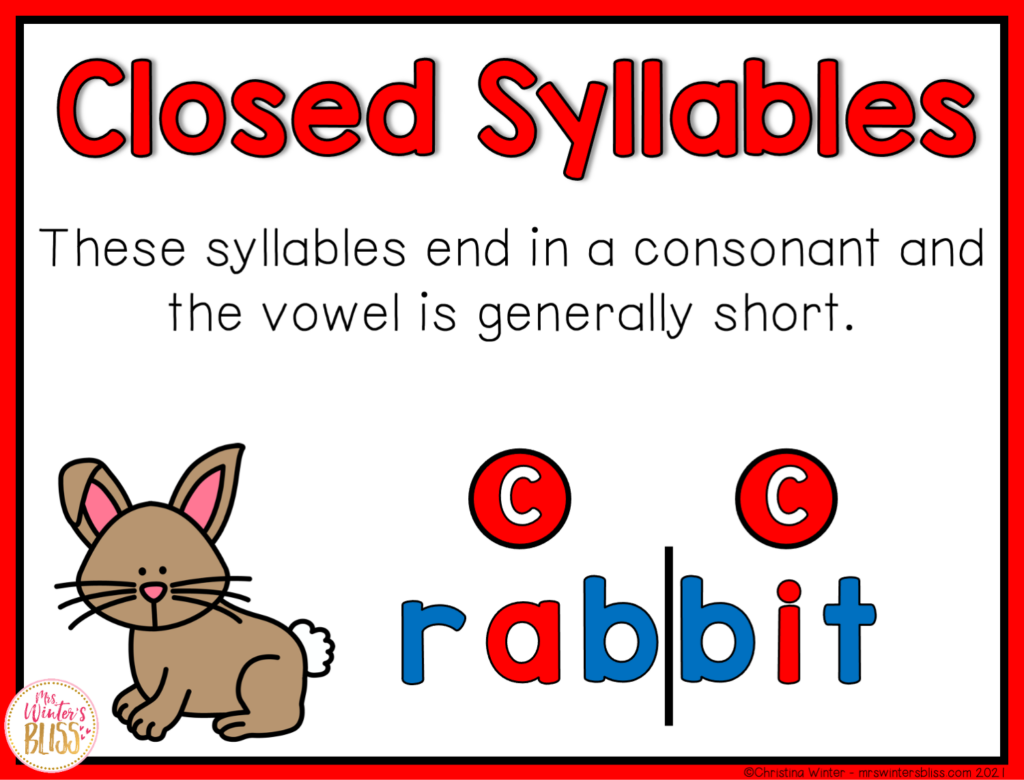
2. Vowel + Consonant + E Syllables: These syllables have a long vowel and end with a silent e. Ex: cup-cake
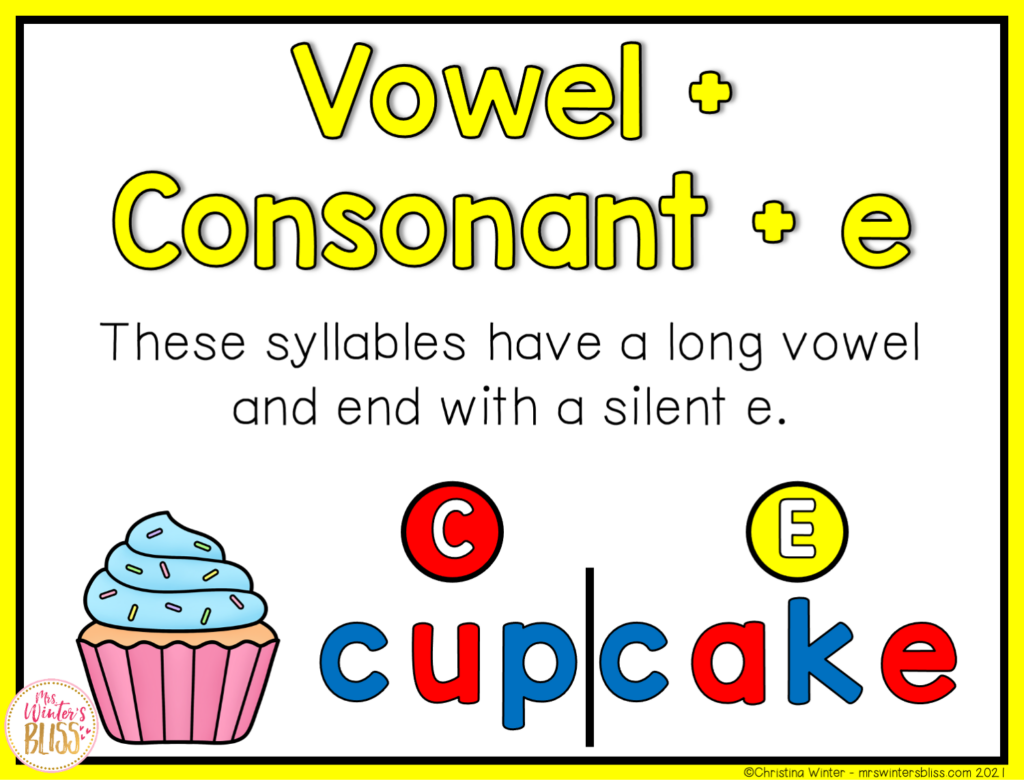
3. Open Syllables: These syllables end in a vowel and the vowel is generally long. Ex: ro-bot
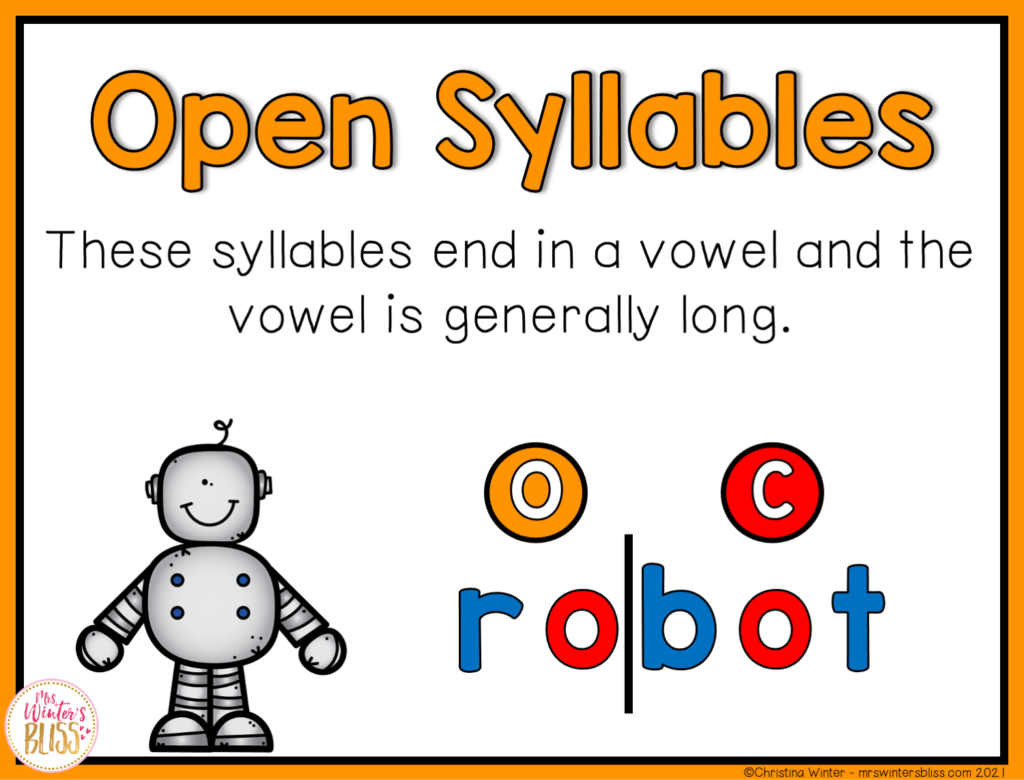
4. Vowel Team Syllables: These syllables are spelled with two vowels that are next to each other. Ex: tea-cup
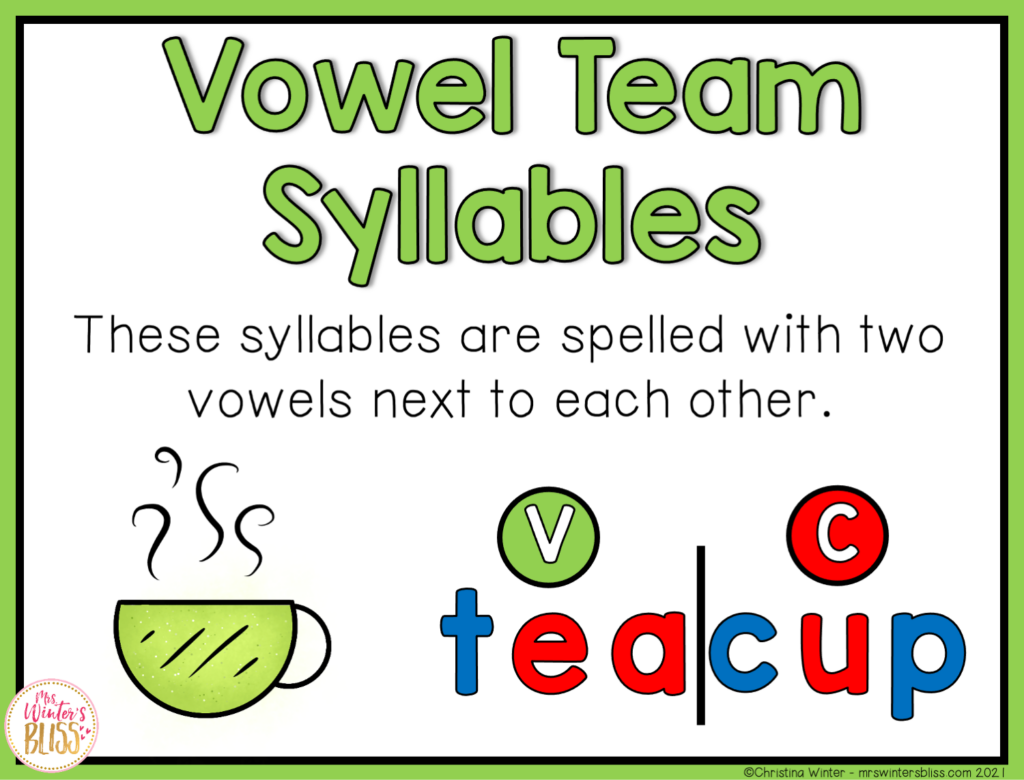
5. R-Controlled: These syllables have a vowel followed by the letter r (er, ir, ur, ar, or). The letter r affects the vowel sound. These types of syllables can be difficult for students to master and will likely require continuous review. Ex: bur–ger
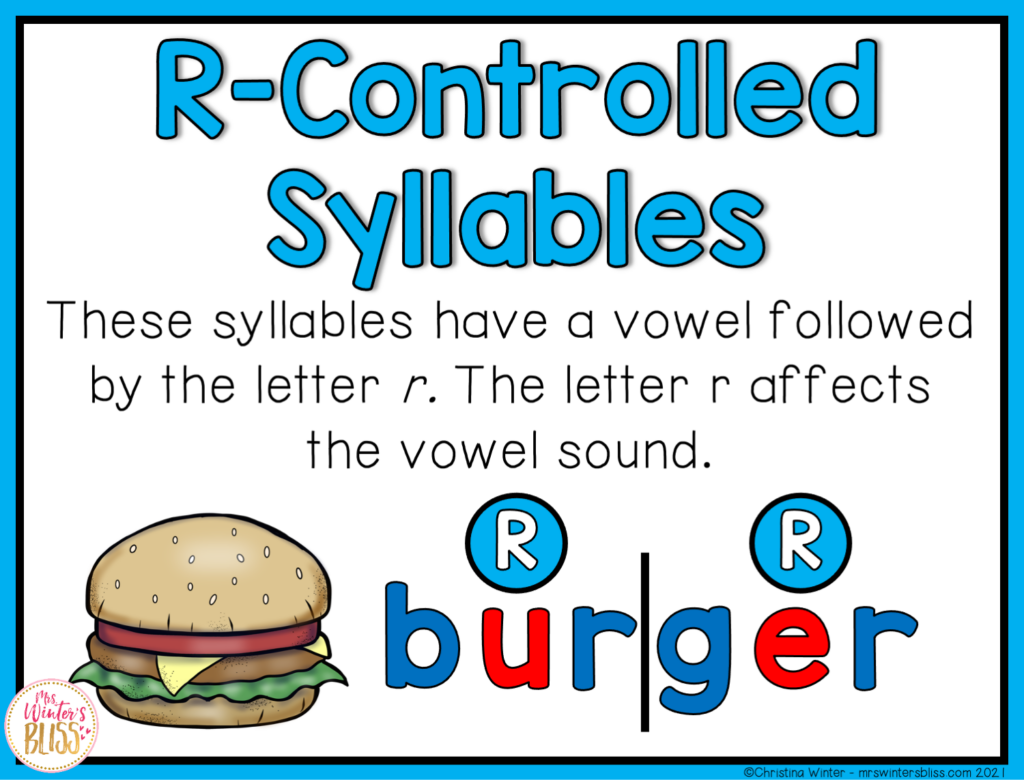
6. Consonant + LE: These syllables have a consonant followed by -le at the end of the word. If a C-le syllable is combined with an open syllable — as in cable, you do not double the consonant. If one is combined with a closed syllable — little — you double the consonant.
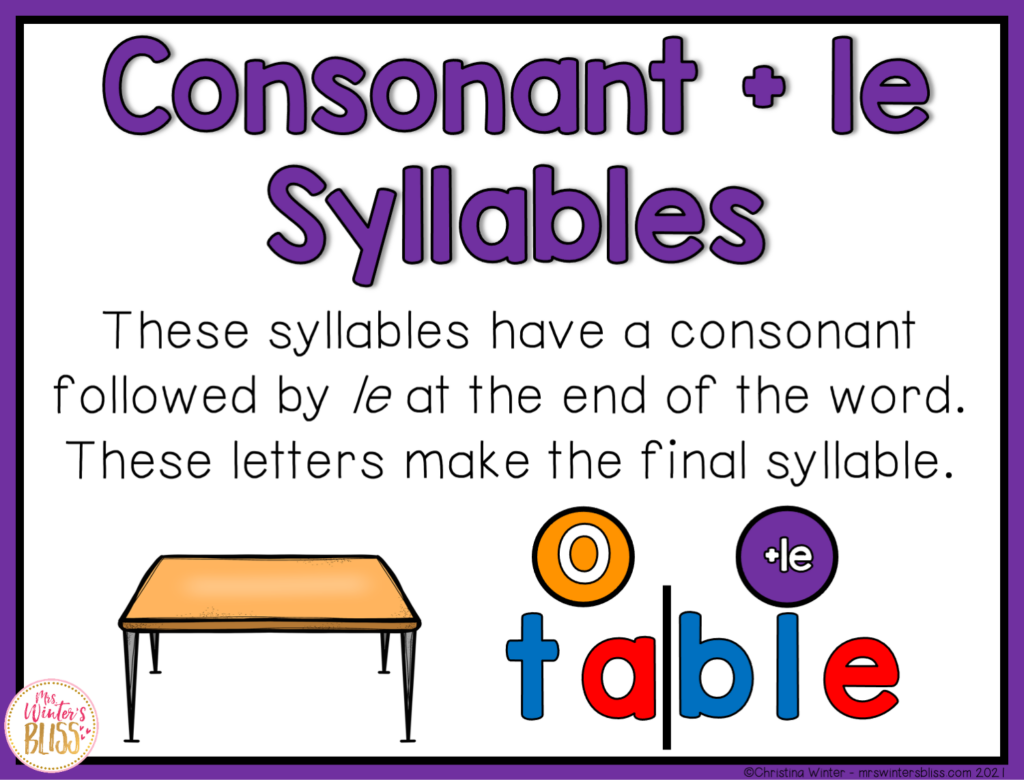
My Syllable Types and Syllable Division Resource
My Syllable Types and Syllable Division resource comes with everything you need to explicitly and systematically teach each kind of syllable to your students, as well as give your students a variety of practice opportunities that they’ll need for mastery!
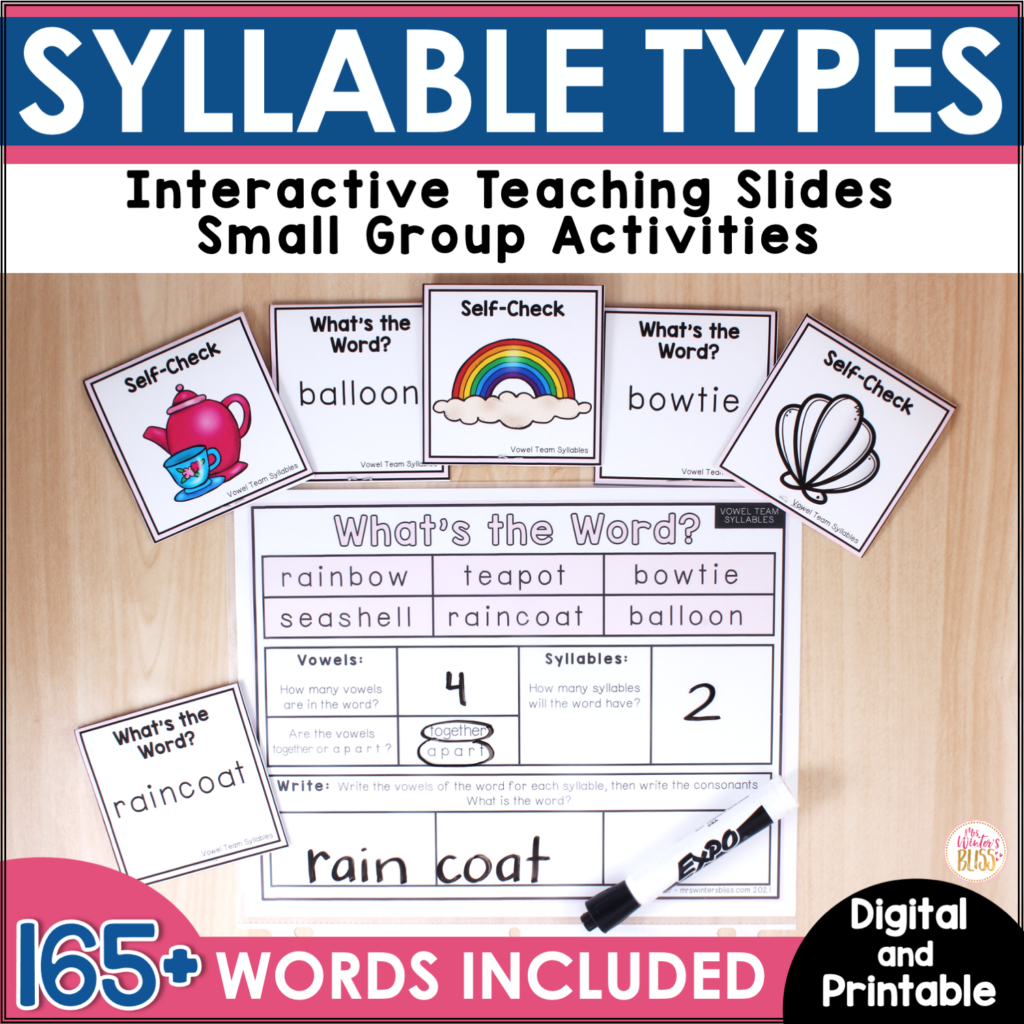
This resource includes research-based syllable type scope and sequence to help ensure your instruction is systematic and leaves no gaps.
You’ll get digital teaching slides designed for whole-group instruction. These ensure all of your students receive explicit, direct instruction when you are first introducing your students to the syllable types.
Next, use these small group practice activities to guide your students to master the six syllable types.
The interactive digital slide activities give students the practice and review we know they need for mastery. These activities provide students with immediate feedback for each word which keeps them engaged and motivated!
The printables provide students with independent practice decoding one-syllable, two-syllable, and three-syllable words.
Once students have mastered the different syllable types, they can use the printable practice sheets or digital slides for independent practice during literacy centers.
Finally, you’ll get teaching posters for each type of syllable that you can use for your direct instruction and/or post in your classroom so students can reference them when needed!
Are you ready to begin teaching syllable types in your classroom? To get you started I’m sharing FREE Syllable Types and Syllable Division – Digital & Printable Activities! This sample makes a perfect literacy center or independent activity!
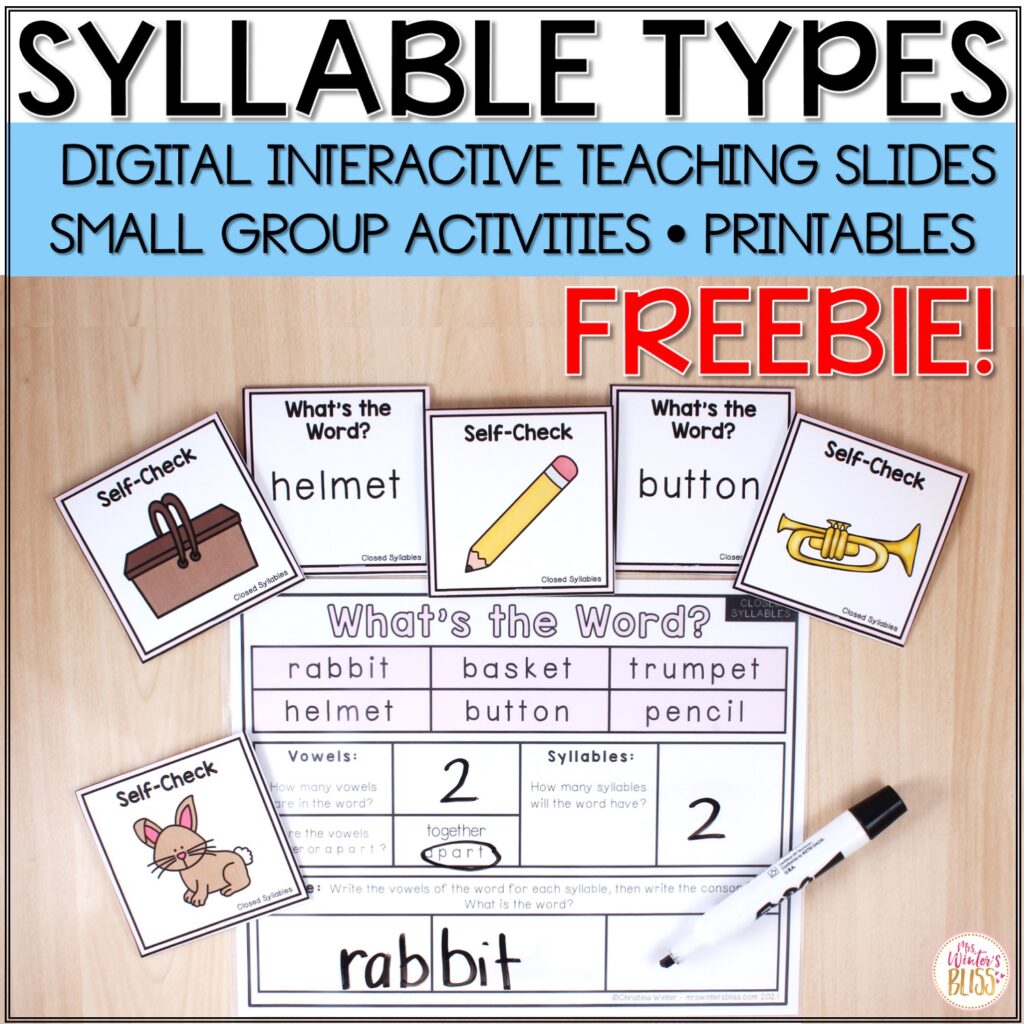
FREE Multisyllabic Word Lists
Finally, to help you teach multisyllabic words, I am happy to offer you FREE phonics skills word lists! These lists serve as excellent teacher references and can be used in many ways: whole group instruction as you introduce and practice new phonics patterns, small group work, fluency reading, and much more.
In one download you’ll get word lists for CVC words, Blends, Digraphs, Long vowels, R-Controlled vowels, Diphthongs, and Multisyllabic words!
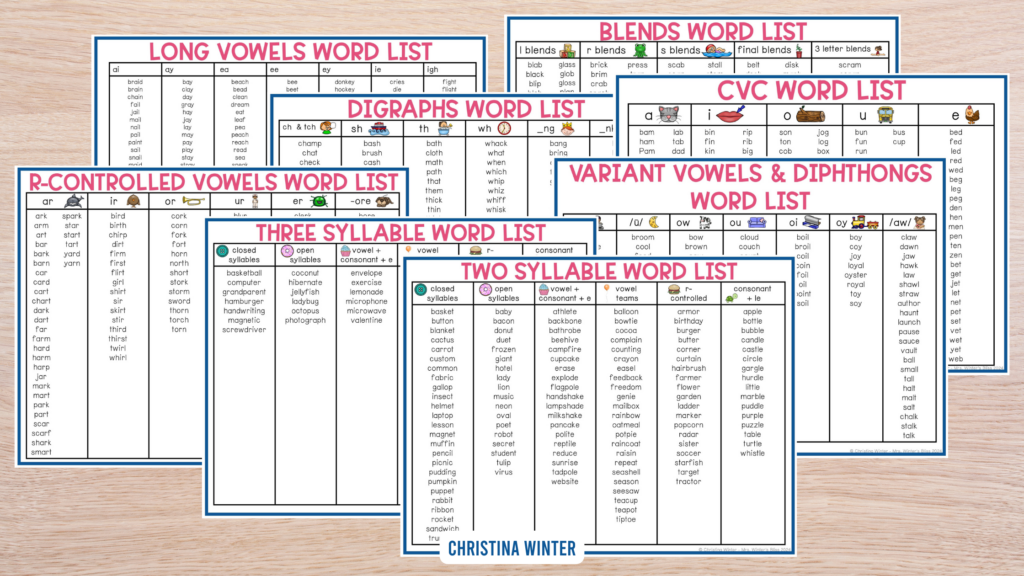
Drop your email below to instantly receive these FREE Phonics Skills Word Lists!
I hope the information and resources I’ve shared here today and throughout this series on how to teach phonics skills will help bring more explicit phonics instruction and meaningful practice to your classroom.
-shop this post-
-
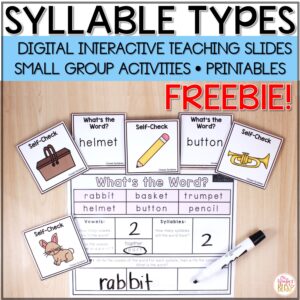 FREE Syllable Types and Syllable Division – Digital & Printable Activities$0.00Rated 5.00 out of 5 based on 23 customer ratings
FREE Syllable Types and Syllable Division – Digital & Printable Activities$0.00Rated 5.00 out of 5 based on 23 customer ratings -
Sale Product on sale
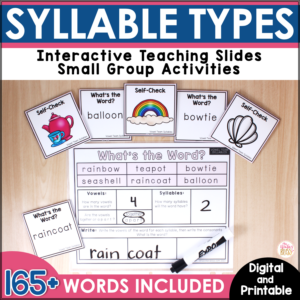 Syllable Types and Syllable Division – Digital & PrintableEarn 0 Reward Points
Syllable Types and Syllable Division – Digital & PrintableEarn 0 Reward Points$18.00Original price was: $18.00.$16.00Current price is: $16.00.Rated 5.00 out of 5 based on 4 customer ratings









